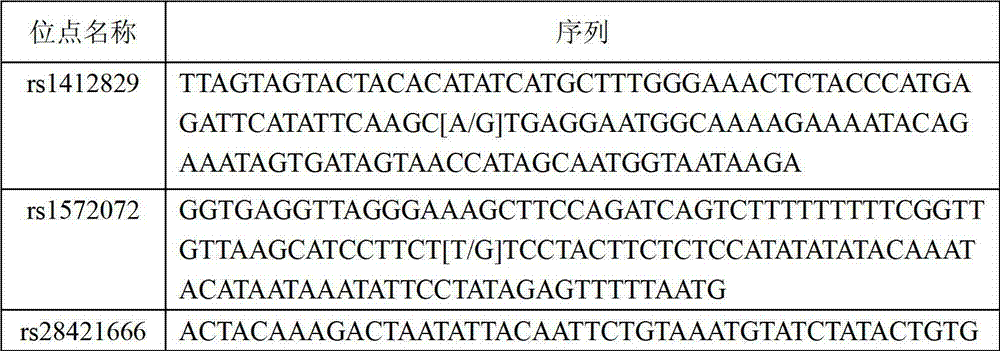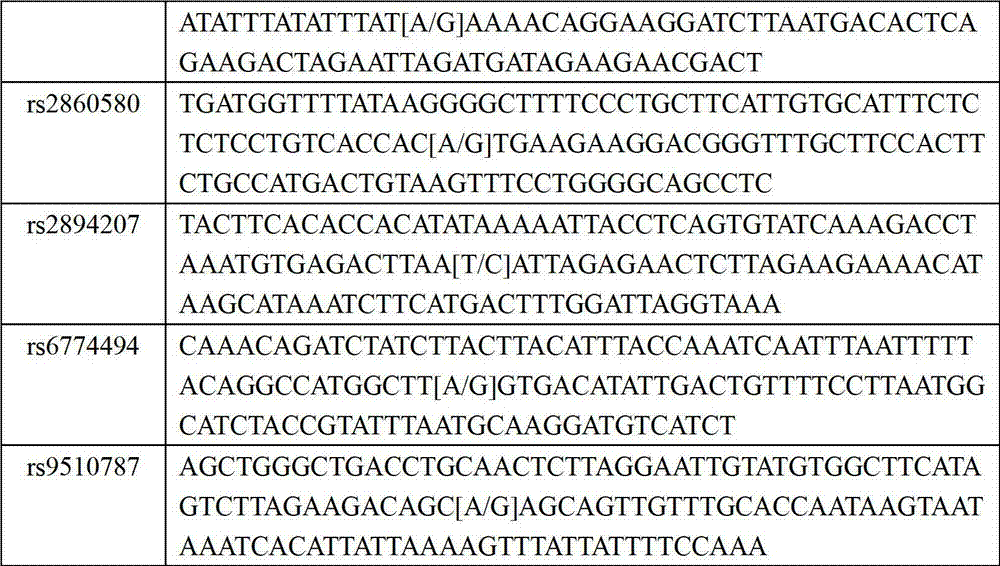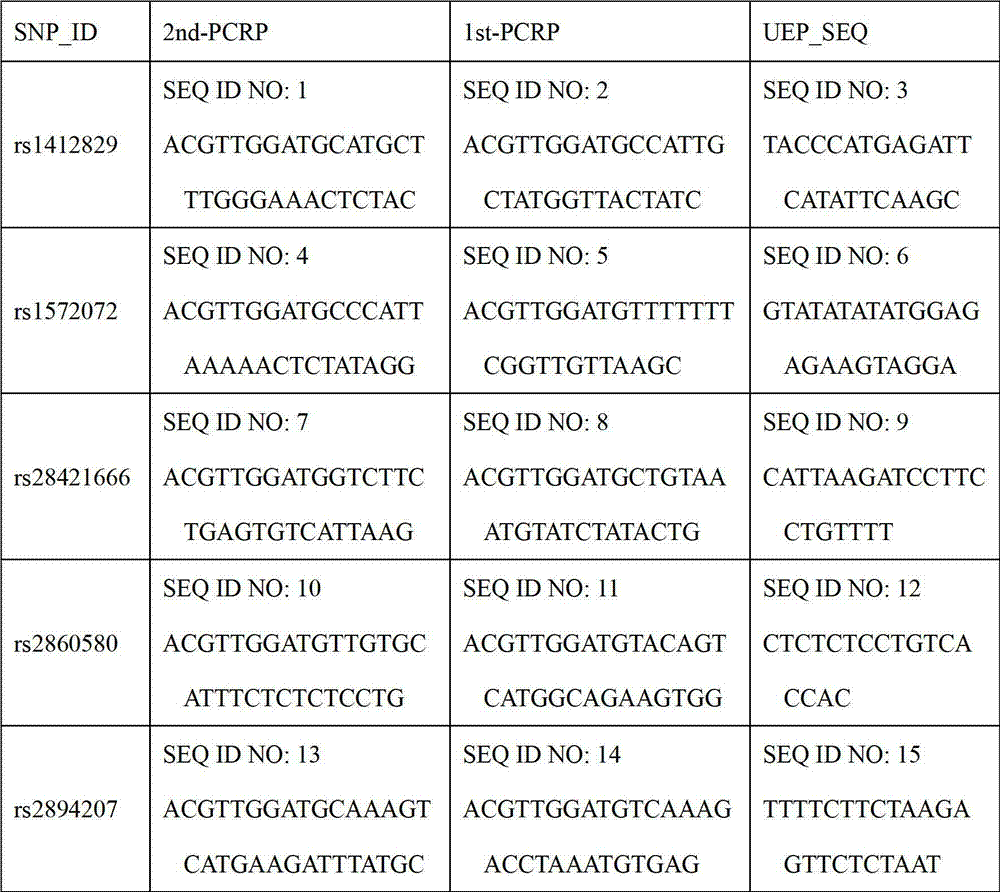Kit for detecting susceptibility gene SNP locus of nasopharynx cancer
A susceptibility gene, nasopharyngeal cancer technology, which is applied in the determination/inspection of microorganisms, biochemical equipment and methods, etc., can solve the problems that need to be verified by large-scale population samples, lack of nasopharyngeal cancer incidence risk prediction products, accuracy rate lower problem
- Summary
- Abstract
- Description
- Claims
- Application Information
AI Technical Summary
Problems solved by technology
Method used
Image
Examples
Embodiment Construction
[0017] 1. SNP sites (7) in the genome of the subject detected by the kit of the present invention
[0018] Through the genome-wide association analysis of nasopharyngeal carcinoma with a large sample size, the inventors obtained the SNPs significantly related to the incidence of nasopharyngeal carcinoma. In addition, combined with HapMap, dbSNP and other databases, the SNP sites were selected, and the success rate of site experiments was scored to determine 7 SNP loci to be studied. Among them, rs1412829 is located in the gene CDKN2A-CDKN2B region, rs1572072 and rs9510787 are located in the gene TNFRSF19 region, rs2860580, rs2894207 and rs28421666 are located in the gene HLA region, and rs6774494 is located in the gene MDS1-EVI1 region.
[0019] Table 1. Seven SNPs significantly associated with the incidence of nasopharyngeal carcinoma
[0020]
[0021]
[0022] 2. Design and synthesize PCR amplification primers and single-base extension primers for the SNP sites to be ...
PUM
| Property | Measurement | Unit |
|---|---|---|
| Sensitivity | aaaaa | aaaaa |
Abstract
Description
Claims
Application Information
 Login to View More
Login to View More - R&D
- Intellectual Property
- Life Sciences
- Materials
- Tech Scout
- Unparalleled Data Quality
- Higher Quality Content
- 60% Fewer Hallucinations
Browse by: Latest US Patents, China's latest patents, Technical Efficacy Thesaurus, Application Domain, Technology Topic, Popular Technical Reports.
© 2025 PatSnap. All rights reserved.Legal|Privacy policy|Modern Slavery Act Transparency Statement|Sitemap|About US| Contact US: help@patsnap.com



